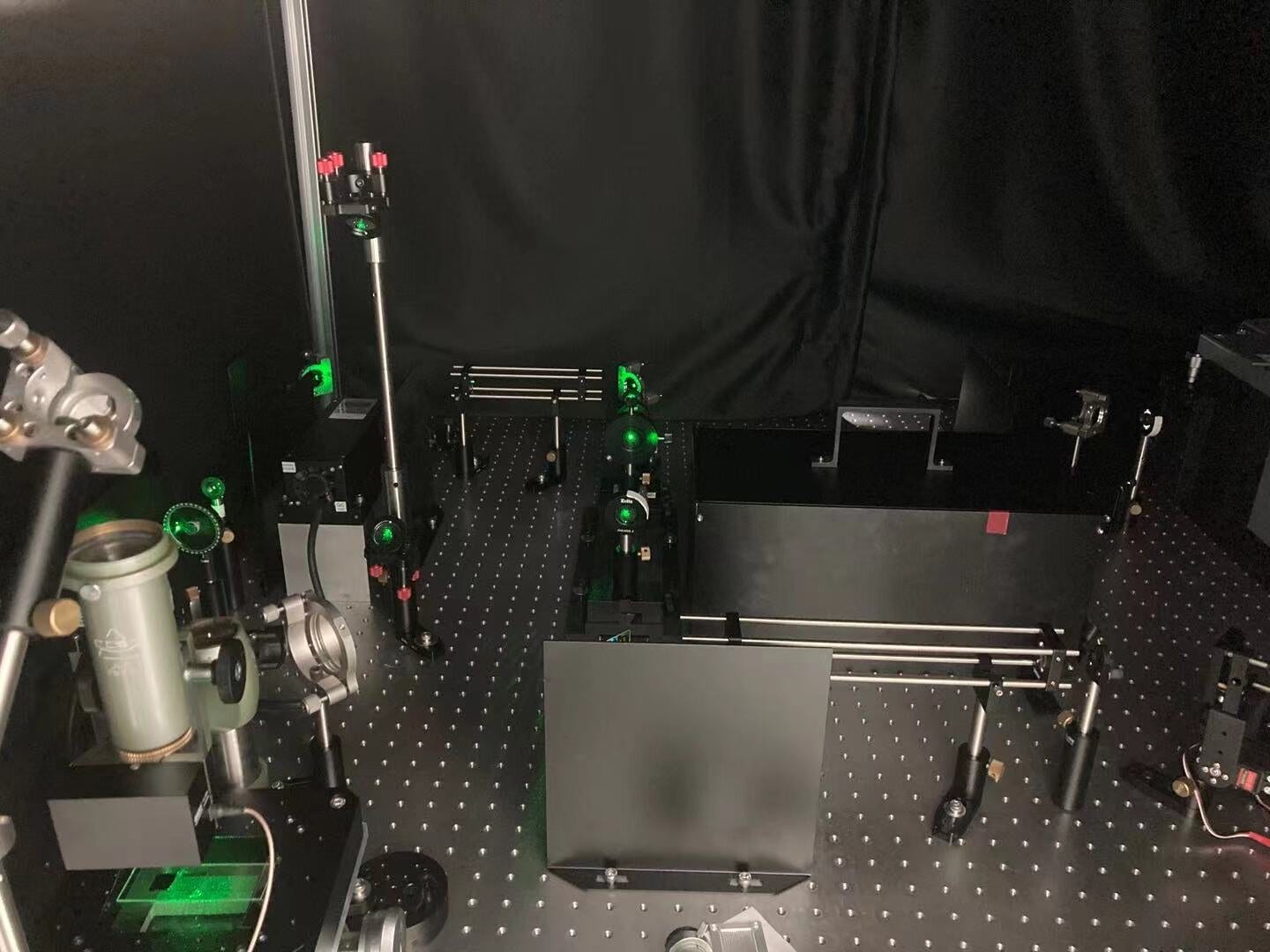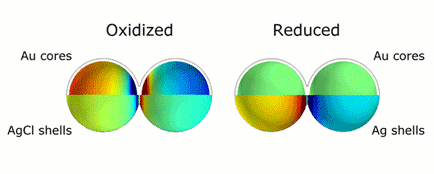
The new approach for digitizing color can be applied to cameras, displays and LED lighting. Because the color space studied isn’t device dependent, the same values should be perceived as the same color even if different devices are used. Pictured is a corner of the optical setup built by the researchers.
Credit: Min Qiu’s PAINT research group, Westlake University
If you’ve ever tried to capture a sunset with your smartphone, you know that the colors don’t always match what you see in real life. Researchers are coming closer to solving this problem with a new set of algorithms that make it possible to record and display color in digital images in a much more realistic fashion.
“When we see a beautiful scene, we want to record it and share it with others,” said Min Qiu, leader of the Laboratory of Photonics and Instrumentation for Nano Technology (PAINT) at Westlake University in China. “But we don’t want to see a digital photo or video with the wrong colors. Our new algorithms can help digital camera and electronic display developers better adapt their devices to our eyes.”
In Optica, The Optical Society‘s (OSA) journal for high impact research, Qiu and colleagues describe a new approach for digitizing color. It can be applied to cameras and displays — including ones used for computers, televisions and mobile devices — and used to fine-tune the color of LED lighting.
“Our new approach can improve today’s commercially available displays or enhance the sense of reality for new technologies such as near-eye-displays for virtual reality and augmented reality glasses,” said Jiyong Wang, a member of the PAINT research team. “It can also be used to produce LED lighting for hospitals, tunnels, submarines and airplanes that precisely mimics natural sunlight. This can help regulate circadian rhythm in people who are lacking sun exposure, for example.”
Mixing digital color
Digital colors such as the ones on a television or smartphone screen are typically created by combining red, green and blue (RGB), with each color assigned a value. For example, an RGB value of (255, 0, 0) represents pure red. The RGB value reflects a relative mixing ratio of three primary lights produced by an electronic device. However, not all devices produce this primary light in the same way, which means that identical RGB coordinates can look like different colors on different devices.
There are also other ways, or color spaces, used to define colors such as hue, saturation, value (HSV) or cyan, magenta, yellow and black (CMYK). To make it possible to compare colors in different color spaces, the International Commission on Illumination (CIE) issued standards for defining colors visible to humans based on the optical responses of our eyes. Applying these standards requires scientists and engineers to convert digital, computer-based color spaces such as RGB to CIE-based color spaces when designing and calibrating their electronic devices.
In the new work, the researchers developed algorithms that directly correlate digital signals with the colors in a standard CIE color space, making color space conversions unnecessary. Colors, as defined by the CIE standards, are created through additive color mixing. This process involves calculating the CIE values for the primary lights driven by digital signals and then mixing those together to create the color. To encode colors based on the CIE standards, the algorithms convert the digital pulsed signals for each primary color into unique coordinates for the CIE color space. To decode the colors, another algorithm extracts the digital signals from an expected color in the CIE color space.
“Our new method maps the digital signals directly to a CIE color space,” said Wang. “Because such color space isn’t device dependent, the same values should be perceived as the same color even if different devices are used. Our algorithms also allow other important properties of color such as brightness and chromaticity to be treated independently and precisely.”
Creating precise colors
The researchers tested their new algorithms with lighting, display and sensing applications that involved LEDs and lasers. Their results agreed very well with their expectations and calculations. For example, they showed that chromaticity, which is a measure of colorfulness independent of brightness, could be controlled with a deviation of just ~0.0001 for LEDs and 0.001 for lasers. These values are so small that most people would not be able to perceive any differences in color.
The researchers say that the method is ready to be applied to LED lights and commercially available displays. However, achieving the ultimate goal of reproducing exactly what we see with our eyes will require solving additional scientific and technical problems. For example, to record a scene as we see it, color sensors in a digital camera would need to respond to light in the same way as the photoreceptors in our eyes.
To further build on their work, the researchers are using state-of-art nanotechnologies to enhance the sensitivity of color sensors. This could be applied for artificial vision technologies to help people who have color blindness, for example.
Original Article: New Algorithms Give Digital Images More Realistic Color
More from: Westlake University | The Optical Society
The Latest Updates from Bing News & Google News
Go deeper with Bing News on:
Digitizing color
- Celebrate Mother’s Day with Creality’s revolutionary 3D Scanners
Mother’s Day is a cherished occasion dedicated to honoring the incredible women who have nurtured and shaped our lives. It’s a time to express our gratitude and love for all the sacrifices and care ...
- Easily digitize old, physical photos: Here's how to scan on iPhone and Androids
Once upon a time, using a scanner would have been the only option to create digital copies, but advances in technology have made it easier than ever to digitize your precious memories and access ...
- Best scanning software of 2024
There are five color modes available, as well as tools to crop and optimize scanned documents. As with similar scanning apps, documents can be automatically saved a cloud service such as Google ...
- Best all-in-one printers in 2024
We also test the scanning and copying functions of the printer, timing how quickly it captures a page and comparing the results to the original images to determine how well it captures color and ...
- How to digitize VHS tapes the cheap way
Below, I’ll walk through how to digitize your own VHS tapes or camcorder footage using the same methods, plus a few extra tricks that might make a USB capture card worth considering. This column ...
Go deeper with Google Headlines on:
Digitizing color
[google_news title=”” keyword=”digitizing color” num_posts=”5″ blurb_length=”0″ show_thumb=”left”]
Go deeper with Bing News on:
Precise digital color
- Xencelabs Unveils Industry First 16-Inch 4K OLED Pen Display: The Ultimate Blend of Professionalism and Portability
The ultra-slim and lightweight OLED pen display provides exceptional portability, vibrant color, high contrast levels, and precise, natural pen performance. VANCOUVER, Wash., May 9, 2024 /PRNewswire/ ...
- Bigger, faster, thinner, lighter iPad Pro and iPad Air models coming to tackle AI
Apple launched its first artificial intelligence product, the M4 Apple silicon chip in a new iPad Pro. Steve Jobs predicted the iPad would replace laptops.
- Fiery Previews AI Innovations at drupa
Fiery will showcase innovations in DFEs and workflow software driving the future of digital printing at drupa 2024.
- What the Tech? Mothers Day Gifts 3
Whether for your mom, your wife, or your grandmother, tech gadgets may not be the first thing you (or she) think would be a good choice.
- The 6 best iPad alternatives in 2024
Looking for an alternative to the Apple iPad? These tablets from Microsoft, Samsung, OnePlus, and more are great options.
Go deeper with Google Headlines on:
Precise digital color
[google_news title=”” keyword=”precise digital color” num_posts=”5″ blurb_length=”0″ show_thumb=”left”]










